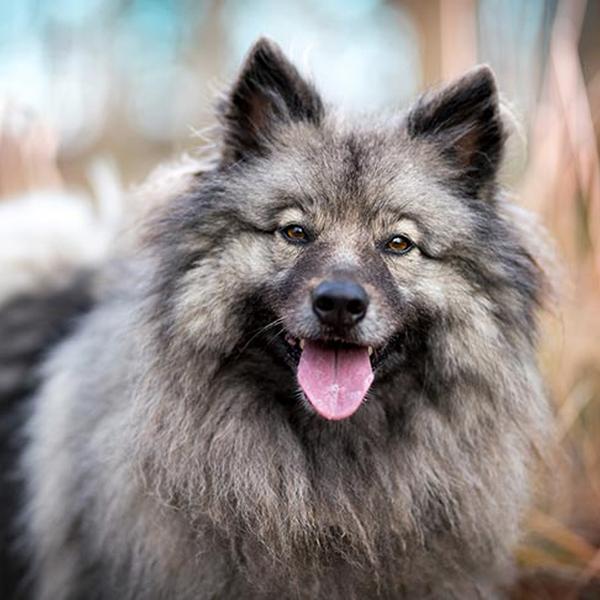Keeshond vs. Saint Bernese: Breed Differences and Similarities
Hypoallergenic
Are Keeshonds or Saint Berneses hypoallergenic, or neither?
Unfortunately, neither Keeshond nor Saint Bernese are hypoallergenic, which may not make them the best choice for dog lovers who suffer from pet allergies.
Temperament
What are the personalities of Keeshond and Saint Bernese dogs?
Agile
Obedient
Quick
Intelligent
Bright
Playful
Sturdy
Independent
Happy
Intelligent
Friendly
Affectionate
Loyal
Gentle
Going
Social
Quiet
Faithful
Shedding Level
Do Keeshonds shed more than Saint Berneses, or which breed sheds more, Keeshonds or Saint Berneses?
Keeshonds shed a lot of hair each year, so frequent brushing is essential for reducing shedding and maintaining coat health.
Saint Berneses are heavy shedders, but regular brushing can help manage shedding and promote a healthy coat.
Watchdog Ability
Which dog breed makes a better watchdog, the Keeshond or Saint Bernese?
Keeshond and Saint Bernese are very good watchdogs. They are a vocal breed and are wary of outsiders, so if someone approaches your home or aims to intrude, these breeds are going to make sure everyone knows about it.
Origin
What is the origin of Keeshond and Saint Bernese dog breeds?
Netherlands
United States
Ancestry
What are the origins of Keeshond and Saint Bernese breeds?
Samoyed, Chow Chow, Finnish Spitz, Norwegian Elkhound, Pomeranian
Saint Bernard and Bernese Mountain Dog
Date of Birth
When were Keeshond and Saint Bernese breeds first developed?
1700s
1990s
Eye Color Possibilites
What are the eye colors of Keeshond and Saint Bernese dogs?
Brown
Brown
Amber
Nose Color Possibilites
What are the natural nose colors of Keeshond and Saint Bernese?
Black
Black
Coat Color Possibilites
What are the natural colors of the coat for Keeshond and Saint Bernese breeds?
Black
Gray
Fawn
Silver
White
Sable
Brindle
White
Brown
Black
Pied
Isabella
Cream
Coat Length
What is the typical coat length for Keeshond and Saint Bernese breeds?
Keeshonds have longer coats compared to most dogs.
Saint Berneses have medium-length coats.
Coat Density
What is the density of the coat of Keeshond and Saint Bernese?
Coat Texture
What is the hair texture of Keeshond and Saint Bernese?
Straight
Litter Size
What is the usual litter size for Keeshond and Saint Bernese?
A Keeshond can have a litter of 12-14 puppies on average. However, it's worth noting that the size of the litters can vary greatly. Factors that can influence litter size include the health of the mother, breeding history, and genetics.
A Saint Bernese can have a litter of 1-14 puppies on average. However, it's worth noting that the size of the litters can vary greatly. Factors that can influence litter size include the health of the mother, breeding history, and genetics.
Adaptability
Keeshonds are highly adaptable and versatile, making them excellent companions for families and individuals of all lifestyles.
Saint Berneses are known for their adaptability and can adjust well to different environments and lifestyle changes.
Health Issues
Between Keeshond and Saint Bernese, which breed is more prone to health problems?
While the Keeshond breed is generally healthy, occasional vet check-ups are still necessary to address any health concerns.
The Saint Bernese breed is generally very healthy, requiring minimal vet visits. Still, it's important to keep an eye on their health and seek veterinary care when needed.
Major Concerns
What are the major health concerns for Keeshond and Saint Bernese breeds?
Renal Cortical Hypoplasia
Hip Dysplasia
Mitral Valve Disease
Heart Disease
Canine Hip Dysplasia (Chd)
Von Willebrand's Disease
Cancer
Gastric Dilation Volvulus (GDV) or Bloat
Spinal Issues
Minor Concerns
What minor health issues should be kept in mind when owning Keeshond and Saint Bernese?
Patellar Luxation
Epilepsy
Skin Problems
Congenital Heart Defect
Allergies
Obesity
Eye Infections
Eye Conditions
Occasional Tests
What occasional tests are recommended for Keeshond and Saint Bernese breeds?
Cardiac
Eye
Hip
X-Rays
Eye Examination
Physical Examination
Eye Examinations
Urinalysis
Complete Blood Count
Buccal Mucosal Screening
Complete Ophthalmologic Examination
Full Body Physical Examination
Skin Biopsy or Intradermal Tests for specific allergies
Skin Scrapings and Biopsies
X-rays or other radiographic imaging
Electrocardiograph (ECG - measures rate and rhythm)
Energy
How do the energy levels of Keeshonds and Saint Berneses compare?
Keeshonds' high energy levels make them unsuitable for a low-key dog, choose accordingly.
Saint Berneses are suitable for those with a balanced lifestyle as they have an average energy level.
Social Needs
Keeshond vs Saint Bernese social needs comparison
Keeshond and Saint Bernese have above average social needs compared to other breeds. They thrive in environments where they have a lot of interaction with humans and other dogs.
Exercise Needed
Keeshond vs Saint Bernese exercise need comparison.
Keeshonds need only a small amount of physical activity, ideal for busy or elderly people or those with limited space.
Saint Berneses require significant physical activity and suit those with an active lifestyle.
Sleeping Need
Which of the two sleeps the most/least: Keeshond or Saint Bernese?
Keeshonds sleep less than other breeds but still need adequate sleep for good health.
Saint Berneses have moderate energy levels and typical sleep patterns of 12-14 hours per day.
Tendency to Bark
Do Keeshonds or Saint Berneses bark more/less frequently?
Keeshond dogs bark and howl frequently and are not recommended for quiet homes.
Saint Berneses are typically quiet and only bark when needed, such as to alert their owner or when in distress.
Mouthiness
Mouthiness Comparison: Keeshond vs Saint Bernese?
Roaming urge
Keeshond vs Labrador: Running away tendency?
Prey Drive
Keeshond or Saint Bernese - which breed has a higher level of prey drive?
Past times
What are some enjoyable activities and ways to keep Keeshond and Saint Bernese entertained?
Walk, Run, Frisbee, Play, Fetch, Eating Snacks, Chewing, Playing, Sniffing, Heel
Road trip, Walking, Cuddling, Car Riding, Exploring, Learning tricks, Dog Parks, Hiking, Training, Sniffing, Exploration, Eating Snacks, Nap, Lounging
Activity Level
Which breed has higher energy, Keeshonds or Saint Berneses?
Both Keeshond and Saint Bernese are medium-energy dogs that enjoy socializing and playing with other dogs. They may engage in casual or sustained games of chase, and occasionally have bursts of barking or racing around the house.
Tolerance of being left alone
Walks per Week
How many miles should Keeshond or Saint Bernese walk each week?
There's really no limit to how far you walk your dog as long as they're comfortable. For Keeshond, it's at least 8 miles / week. Just remember to build distance and stamina gradually over time.
There's really no limit to how far you walk your dog as long as they're comfortable. For Saint Bernese, it's at least 12 miles / week. Just remember to build distance and stamina gradually over time.
Activity per Day
Do Keeshonds or Saint Berneses require more exercise?
Both Keeshond and Saint Bernese typically require a minimum of 60 minutes of exercise each day. The exercise can be spread throughout the day and may involve high-energy activities like walking, running, and playing.
Grooming
Which breed is easier to maintain in terms of grooming, Keeshonds or Saint Berneses?
Keeshonds require significant grooming, including regular trims and professional grooming assistance to maintain their coat. They may also require frequent bathing to keep their coat and skin healthy.
The Saint Bernese requires an average amount of grooming compared to other breeds.
Brushing Frequency
What is the recommended brushing frequency for Keeshond and Saint Bernese dogs?
Ideally, both Keeshond and Saint Bernese should be brushed at least 2 or 3 times a week (preferably daily) to improve shedding.
Brushing Tools
What brushing tools are used for Keeshonds and Saint Berneses?
Pin Brush
Slicker Brush
Comb
Nail Clipper
Pin Brush
Comb
Deshedder
Nail Clipper
Cups
How much food should be given to Keeshond or Saint Bernese in cups?
For an average 35-45 pound (16 - 20 kg) Keeshond feed 2.5 cups daily. But, keep in mind, the amount you feed is going to be dependent on the quality of the food you are feeding.
For an average 120-180 pound (54 - 82 kg) Saint Bernese feed 3.5 cups daily. But, keep in mind, the amount you feed is going to be dependent on the quality of the food you are feeding.
Daily Cost
Which breed has a higher daily cost, Keeshond or Saint Bernese?
The average cost of a Keeshond is somewhere $2.50 - $3.20 per day.
The average cost of a Saint Bernese is somewhere $3.90 - $4.20 per day.
Monthly Cost
Which breed has a higher monthly cost, Keeshond or Saint Bernese?
The average per month expenses of a Keeshond is between $84 - $95. This makes an average of $1008 - $1140 per year. It will be on the higher side when the dog is still small because it will need more frequent visits to the vet, shots.
The average per month expenses of a Saint Bernese is between $112 - $126. This makes an average of $1344 - $1512 per year. It will be on the higher side when the dog is still small because it will need more frequent visits to the vet, shots.
Intelligence
Comparing Intelligence: Keeshonds vs Saint Berneses
Keeshond is a very intelligent and trainable breed.
Saint Berneses are average in obedience intelligence but have a high IQ and may cause trouble if left unsupervised.
Sensitivity Level
How do Keeshond and Saint Bernese compare in sensitivity?
These dog breeds are particularly attuned to its environment and the emotions of those around it. Keeshond and Saint Bernese can be easily overwhelmed by loud noises, new environments, unfamiliar people, or animals. This dog breed is best suited for individuals or families who are patient, gentle, and understanding of its sensitive nature. It may also benefit from a calm and stable home environment, with a consistent routine and plenty of positive reinforcement training.
Affection Dependance
Which is the more affectionate dog breed: Keeshond vs Saint Bernese?
Apartment Friendly
Which breed is more apartment-friendly: Keeshond or Saint Bernese?
Keeshonds and Saint Berneses are dogs that do well in apartments with sufficient exercise, but they would really appreciate a small yard.
Child Friendly
Do Keeshonds or Saint Berneses have a friendlier temperament towards children?
Keeshond and Saint Bernese are kid-friendly dogs. They are good with children and excellent dogs with children if they are socialized and trained at a young age.
Senior-friendly
Which dog is more suitable as a pet for the elderly - Keeshond or Saint Bernese?
Cat Friendly
Do Keeshond or Saint Bernese breeds have a better compatibility with cats?
Keeshonds and Saint Berneses are one of the best dogs for cats. They accept cats readily as part of the family. However, this dog breed should be trained to not chase after the kitty early on
Dog Friendly
Which breed is more sociable with other dogs: Keeshond or Saint Bernese?
Keeshonds and Saint Berneses are friendly, active and loyal companions. They generally love to be around other dogs, making them a good family pet for some.
Pet friendly
How do Keeshond or Saint Bernese dogs interact with other pets?
Stranger Friendly
Which breed is more friendly with strangers: Keeshond or Saint Bernese?
Keeshonds are highly friendly around strangers.
Saint Berneses are averagely friendly around strangers but benefit from early socialisation.
Playfulness
Which breed is more playful between Keeshond and Saint Bernese?
Keeshond and Saint Bernese have an average level of playfulness. Like other dogs, they enjoy playing, but they are not the most playful dog breed.
Trainability
How do the trainability levels of Keeshonds and Saint Berneses compare?
Keeshond and Saint Bernese dogs are usually easy to train, but may require consistency to fully obey commands.
Compare Keeshond with other breeds
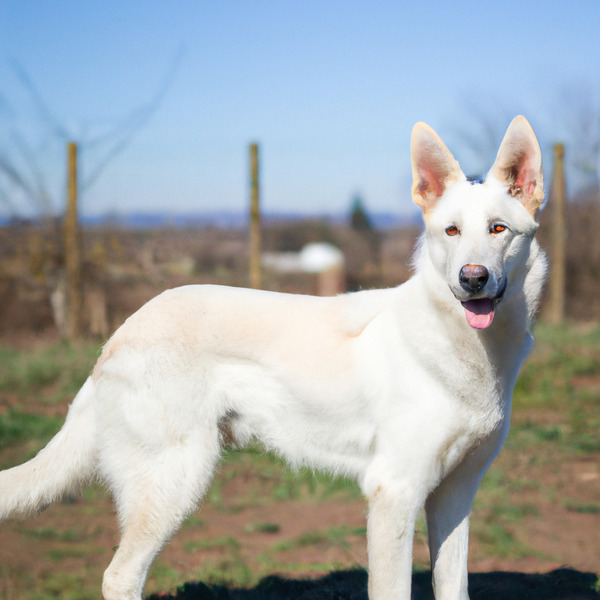
White Shepherd
Keeshond vs White Shepherd

American Hairless Terrier
Keeshond vs American Hairless Terrier
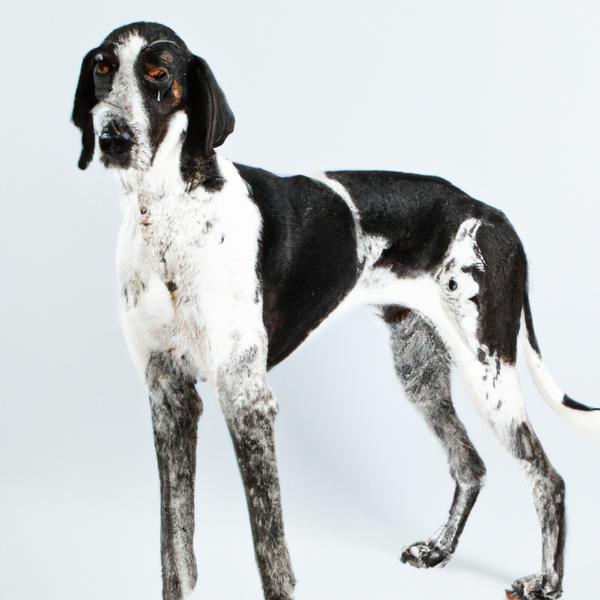
Spantriever
Keeshond vs Spantriever

Papiox
Keeshond vs Papiox

Rottie Bordeaux
Keeshond vs Rottie Bordeaux

Cocker Pug
Keeshond vs Cocker Pug
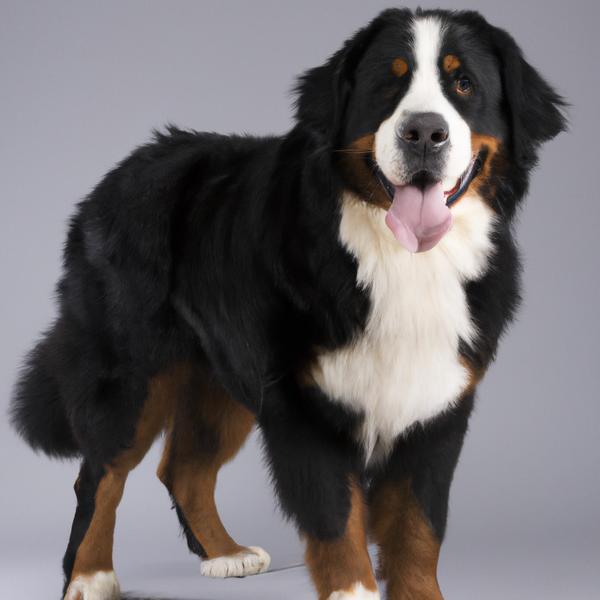
Saint Bernese
Keeshond vs Saint Bernese

Beagleman
Keeshond vs Beagleman
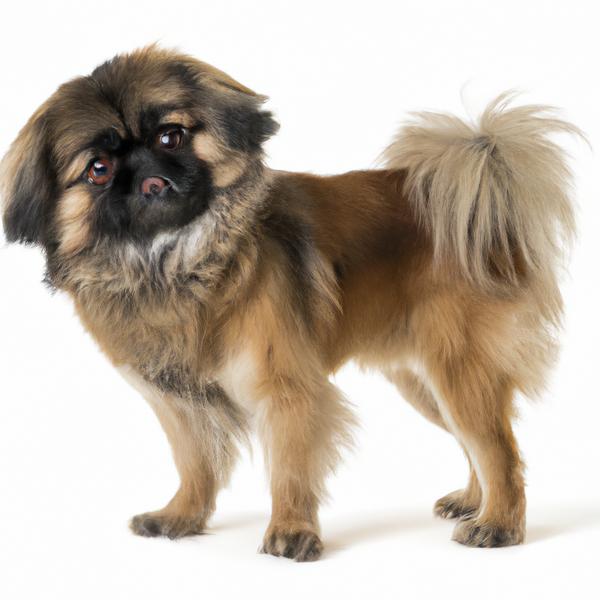
Peke-A-Boo
Keeshond vs Peke-A-Boo

Hava-Apso
Keeshond vs Hava-Apso

French Bull Dane
Keeshond vs French Bull Dane

English Coonoodle
Keeshond vs English Coonoodle
